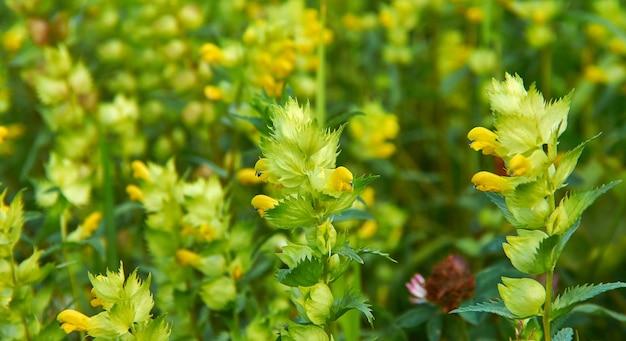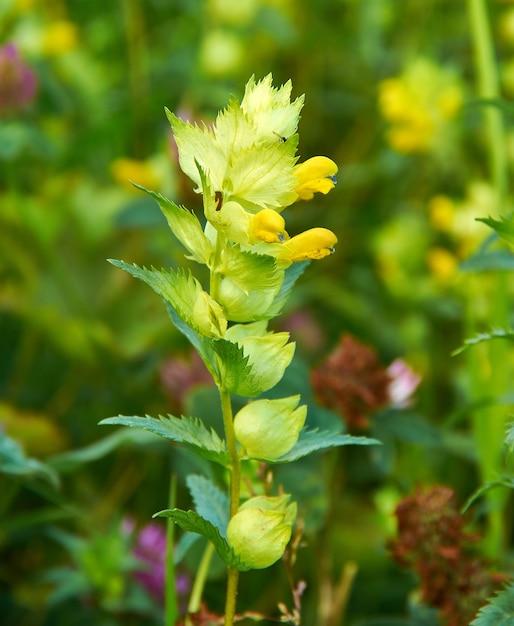Welcome to our blog post on the fascinating world of temperate grasslands! If you’re curious about the diverse ecosystem of these expansive grassy plains and the crucial role that producers play in sustaining life in this habitat, you’ve come to the right place.
In this article, we’ll be diving into the topic of producers in the temperate grasslands, shedding light on the plants that form the foundation of this unique environment. From towering grasses to vibrant wildflowers, these producers not only provide sustenance for a wide array of organisms but also contribute to the overall health and balance of the ecosystem. We’ll explore their significance and discover some fascinating facts along the way.
So, let’s embark on an exciting journey through the temperate grasslands, uncovering the remarkable green giants that make it all possible. Get ready to be amazed by the interconnectedness of this vibrant ecosystem and the incredible adaptations of its producers. Let’s begin!
What Are Some Producers in the Temperate Grasslands
The temperate grasslands, also known as prairies or steppes, are home to a diverse range of producers that play a crucial role in the ecosystem. Let’s take a closer look at some of these unique and essential plants that thrive in the temperate grasslands.
🌿 Tallgrass Prairie Blues
One of the most iconic producers in the temperate grasslands is the Big Bluestem (Andropogon gerardii). With its characteristic towering height, it’s no wonder this grass is known as the “King of the Prairie.” Standing at an impressive 6 feet tall, the Big Bluestem sways gracefully in the wind, adding a touch of elegance to the grasslands scenery.
🌾 Little Bluestem, Big Impact
Not to be outshined by its taller cousin, the Little Bluestem (Schizachyrium scoparium) holds its ground with its rusty-red stems and feathery seed heads. This hardy grass is well-adapted to the unpredictable weather of the temperate grasslands, thanks to its deep root system that allows it to endure both droughts and floods.
🌼 Sunflowers: Golden Guardians
Brightening up the temperate grasslands with their vibrant yellow blooms, sunflowers (Helianthus annuus) are a sight to behold. These cheerful flowers not only add a pop of color but also provide an important food source for insects, birds, and even humans. Sunflower seeds, packed with nutrients and healthy oils, have found their way into our salads, snacks, and cooking oils.
🌿 Feathered Food Munchers
Tucked away in the grasslands, Indian grass (Sorghastrum nutans) stands tall and proud. With its abundant seeds, it serves as a feast for both small and large animals alike, including various bird species like sparrows. This feathered food muncher gladly contributes to the biodiversity of the temperate grasslands while satisfying its own appetite.
🌾 Wheat: The Staff of Life
When we think of producers, wheat (Triticum spp.) often comes to mind, and rightly so. It has been a staple crop for centuries, providing sustenance to millions around the globe. Flour made from wheat allows us to indulge in delicious bread, pasta, and other baked goods. Fields of golden wheat waving in the breeze symbolize the abundance and agricultural importance of the temperate grasslands.
🌼 Dandelions: The Persistent Perennials
Love them or loathe them, dandelions (Taraxacum officinale) thrive in the temperate grasslands with unrivaled determination. Despite their status as uninvited guests in manicured lawns, dandelions are valuable producers. Bees and other pollinators flock to their bright yellow flowers, and their taproots help aerate the soil, allowing important nutrients to reach deeper underground.
🌿 Grasses Galore
Of course, we can’t forget the integral role that various grasses play in the temperate grassland ecosystem. From blue grama (Bouteloua gracilis) to switchgrass (Panicum virgatum) and buffalo grass (Bouteloua dactyloides), the grasses provide food and shelter for numerous grazing animals, stabilize the soil, and prevent erosion.
With their unique adaptations and contributions, these producers create a delicate balance in the temperate grasslands, supporting the intricate web of life that depends on them. So, next time you find yourself in the vast expanse of the grasslands, take a closer look at these remarkable plants and appreciate their beauty and significance.
FAQ: What are some producers in the temperate grasslands
What is the top predator on Earth
The top predator on Earth is the mighty Killer Whale, also known as the Orca. These apex predators dominate the oceans with their incredible hunting skills and impressive size. Standing at the top of the food chain, these marine mammals are not to be messed with!
Is a Bison a secondary consumer
No, the Bison is not a secondary consumer. In fact, the Bison is a primary consumer. These magnificent creatures graze on the vast grasslands, munching on nutrient-rich grass. They play a vital role in the temperate grassland ecosystem, helping to spread seeds and fertilize the land with their droppings.
What eats a bird in a food chain
In the intricate web of the food chain, there are several predators that have a taste for birds. Some notable bird-eaters include birds of prey such as Falcons, Hawks, and Eagles. These skilled hunters swoop down from the sky with lightning speed, catching unsuspecting birds in their powerful talons.
What are some producers in the temperate grasslands
Ah, the temperate grasslands, where the winds dance with the grasses. Here, you’ll find an array of fascinating producers that keep the ecosystem balanced and thriving. Some of the notable producers in the temperate grasslands include the beloved Prairie Grass, Wheat, Barley, and the noble Sunflower. These plants soak up the sunlight and convert it into energy through the process of photosynthesis, sustaining the entire ecosystem.
Is the Grasshopper a secondary consumer
No, my friend, the Grasshopper is not a secondary consumer either. It falls under the category of primary consumer. These jumping insects delight in munching on the tasty grasses of the temperate grasslands. They provide a valuable food source for higher-level consumers such as birds and certain mammals. So, the Grasshopper is happy doing its primary consumer thing, hopping along and enjoying its leafy feast.
And there you have it, my dear readers, the answers to some intriguing questions about producers in the temperate grasslands. From the impressive Killer Whale to the humble Grasshopper, every organism plays its part in this enchanting ecosystem. Remember, nature always has more surprises in store, so keep exploring and discovering the wonders of our world!

